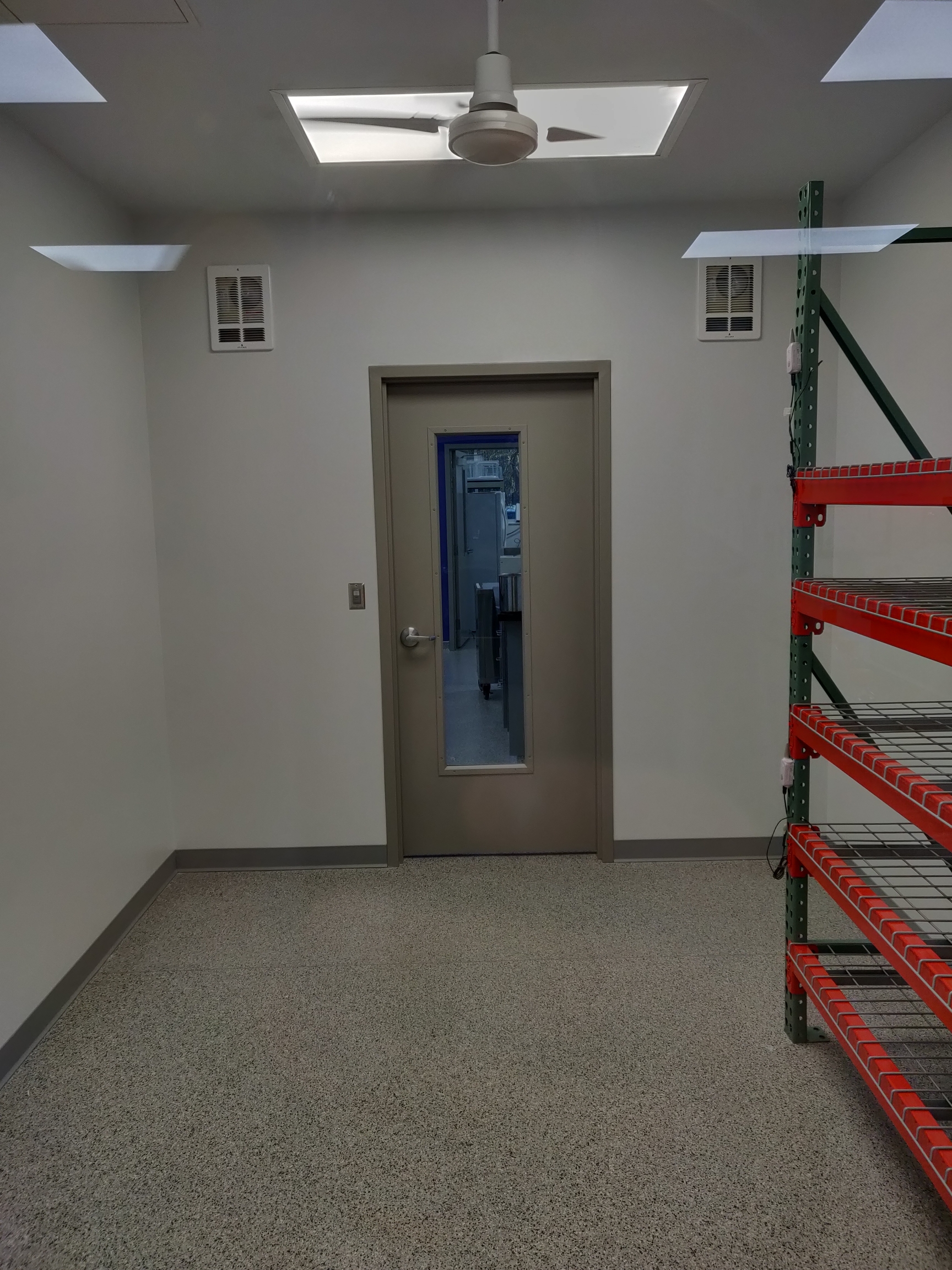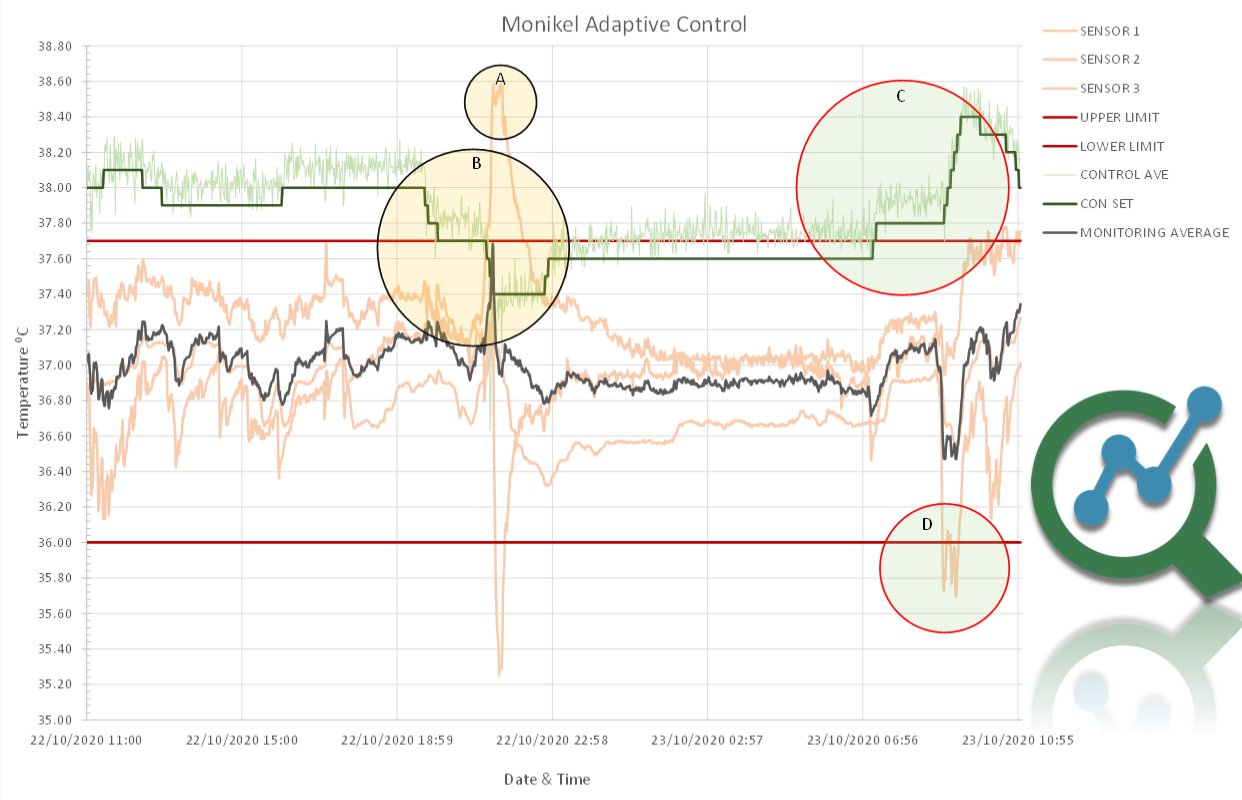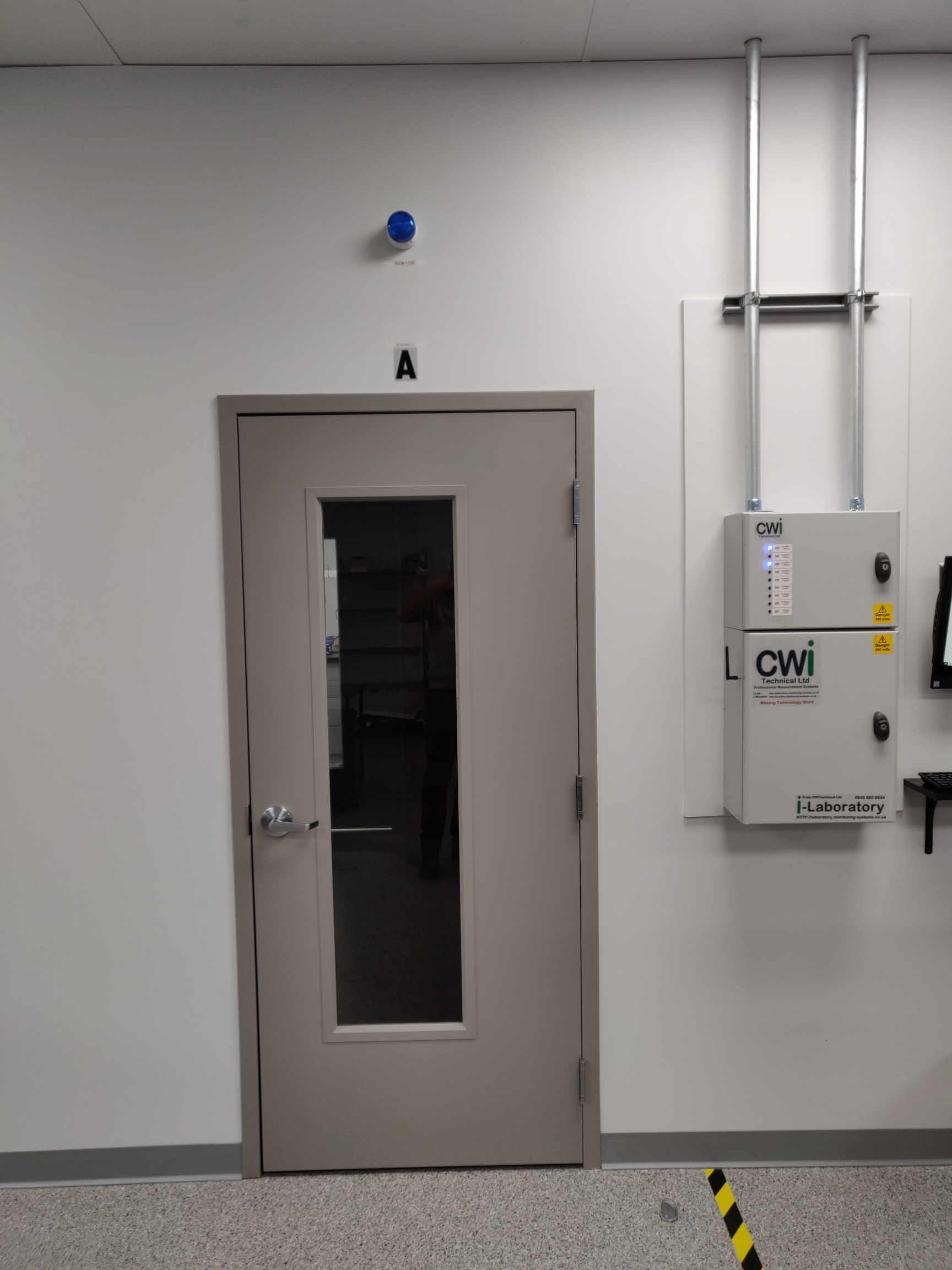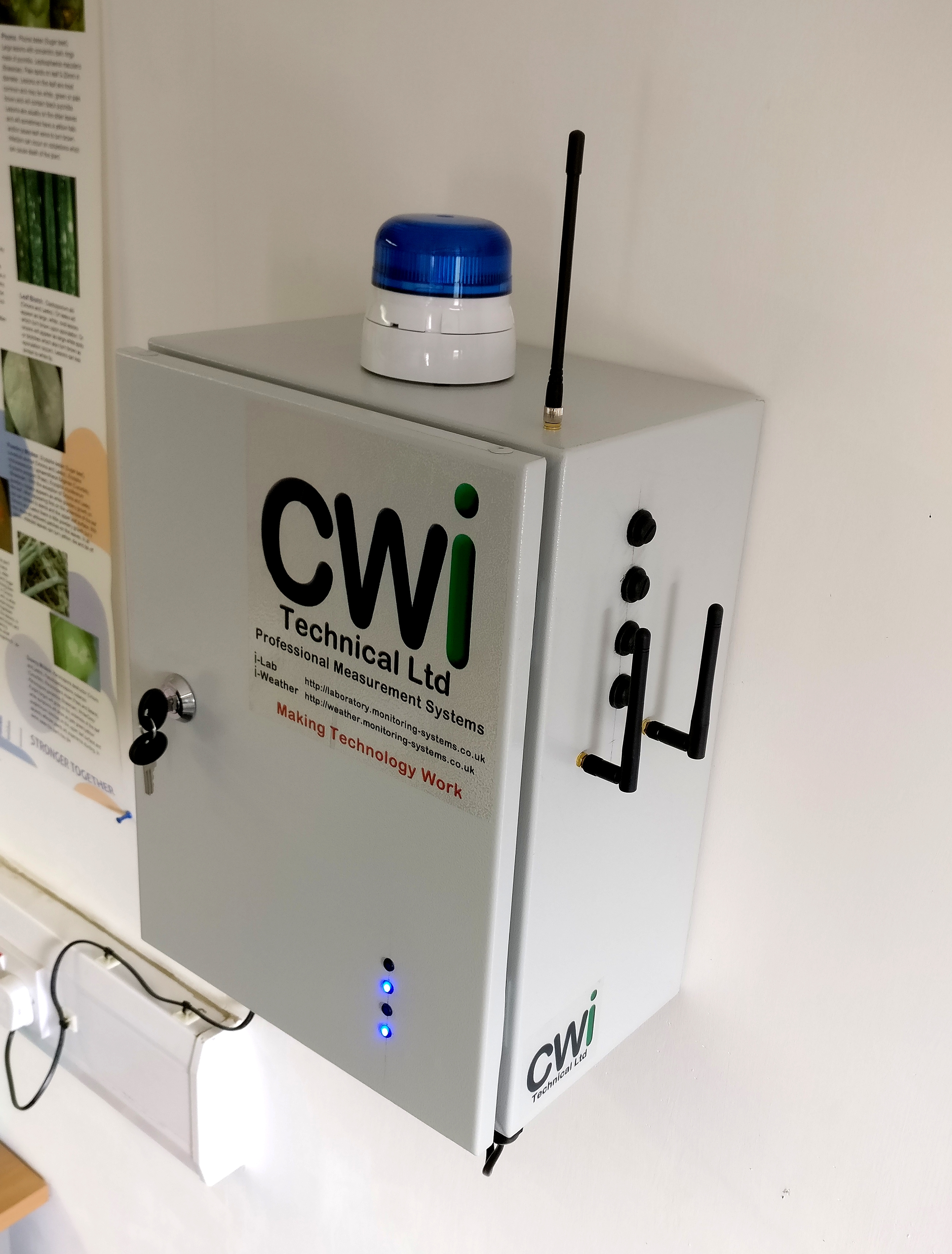Adaptive Room Control
Safely link an accurate control system with calibrated monitoring sensors
There are many unique features of the Monikel Monitoring system, one which we have developed over years is Adaptive Control.
Monitoring sensors are allowed, within strict parameters, to gently adjust the control temperature of a room to maintain much more accurate room stability.
Larger room sized incubators, and hot boxes (which we manufacture) create very different issues when operating in hi-capacity laboratory environments. Thermal mass during shift or cycle changes has a big impact on the control requirements and the stratification within the environment.
Control thermistors are usually located in the ceiling of the room, and therefore register unstratified air which is typically hotter than the air within the rooms usable area.
Monikel safely links the accurate control system with the calibrated monitoring sensors. These sensors, properly placed within a mapped room influence the performance of the control system to keep the room within your specification and tolerance irrespective of the change in thermal mass.
As many monitoring sensors are themselves buffered to account for rapid changes, the system is very subtle, and configurable, meaning you can adjust the settings to give you perfect room performance.


In the diagram:
The room is unloaded or loaded at pint A, the destratification is evident as the fans in the room cannot control the new parameters which means the door is likely open. One sensor peaks and another falls, but the average rises. The control temperature is lowered automatically in steady increments until the room stabilises.
At Point C, the room is again loaded or unloaded, and the room system temperature falls. The monitoring probes influence the control temperature, increasing it, so that a stable target temperature is maintained in the usable area of the room.
The chart shows the control temperature following the changes in set temperature, and the monitored area of the room staying within the red defined tolerances as an average.
Point D shows a temperature drop offset by the Adaptive Control system.
Incubator Room Temperature Control Case Study
An automated solution was required for a client with a longer/narrower incubator room generating unforeseen thermal mass characteristics.
The thermal mass was difficult to stabilise because of the size and shape of the room, so every time the room was loaded or emptied, the temperature would drop and stay dropped.
The solution was to use the data the monitor sensors were providing to influence the temperature control in the room. By using the monitored information, the control parameters of the room could be subtly adjusted to be kept within its desired temperature range. So, when the room dropped in temperature, probably because of loading or a change in thermal mass, the control temperature is gradually incremented automatically to within the limits required. With safety levels set at +/- 2° the room can never get too hot or too cold under normal working conditions before an alert is triggered.
The client can now use larger incubator rooms, processing more samples, more effectively. This challenge was solved by expanding the limits of the technology available by better use of the data being gathered. In this example it was temperature data, but we can apply Monikel Adaptive Control systems to almost any situation to influence the parameters linked to environment control.



